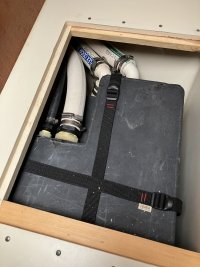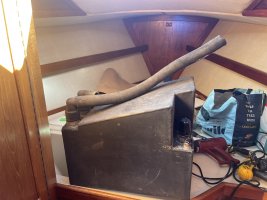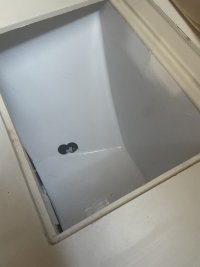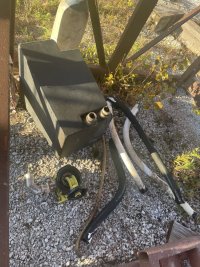For sanitation hose, I used Saniflex Odor Shield and Trident-Premium. For tank vent, I used 1/2” Shields 1350HD water hose which looks like common fuel line. The original clear hose had deteriorated, and I figured “water hose” should be okay as it should never carry liquids.
View attachment 51069
Removable cover is supported by new cleats which are attached by the screws shown. Original cleats were attached from below and prevented removal of the tank.
View attachment 51070
An elbow was installed in each of the bottom-connected hoses to make installation much easier, and to minimize torque on the elbows at the tank bottom which could result in leaking. The webbing straps attach to a webbing belt a few inches below the top of the tank. That made installation and test-fitting of the tank much easier than without.
I recommend that each screwed fitting be sealed with teflon tape followed by pipe dope such as Hercules Megaloc 15804.







